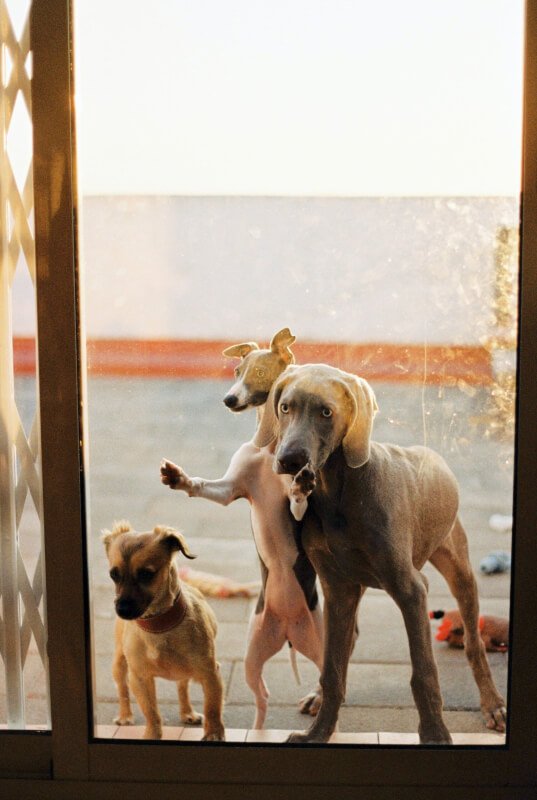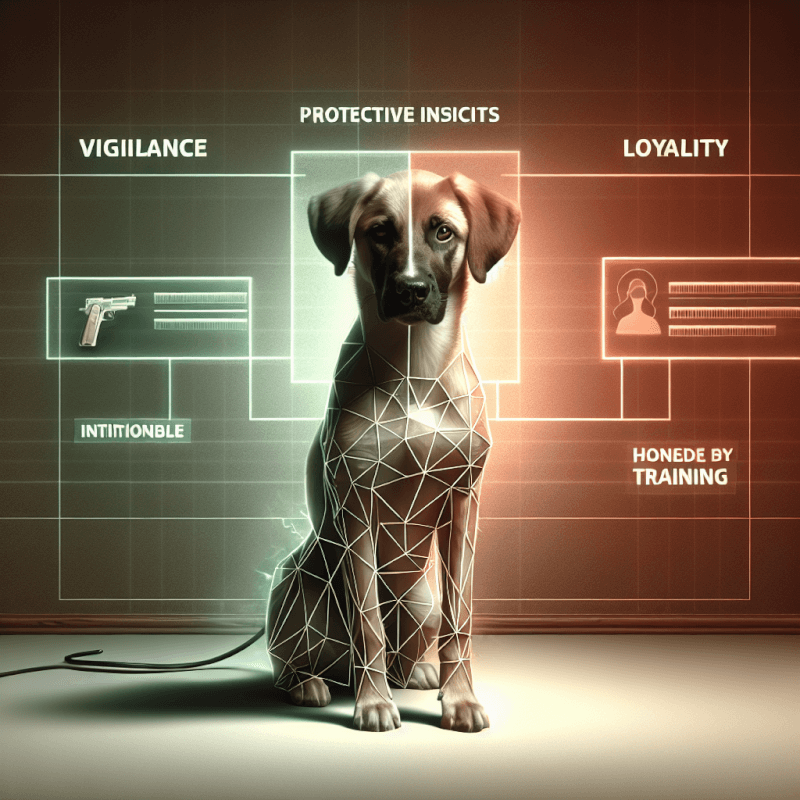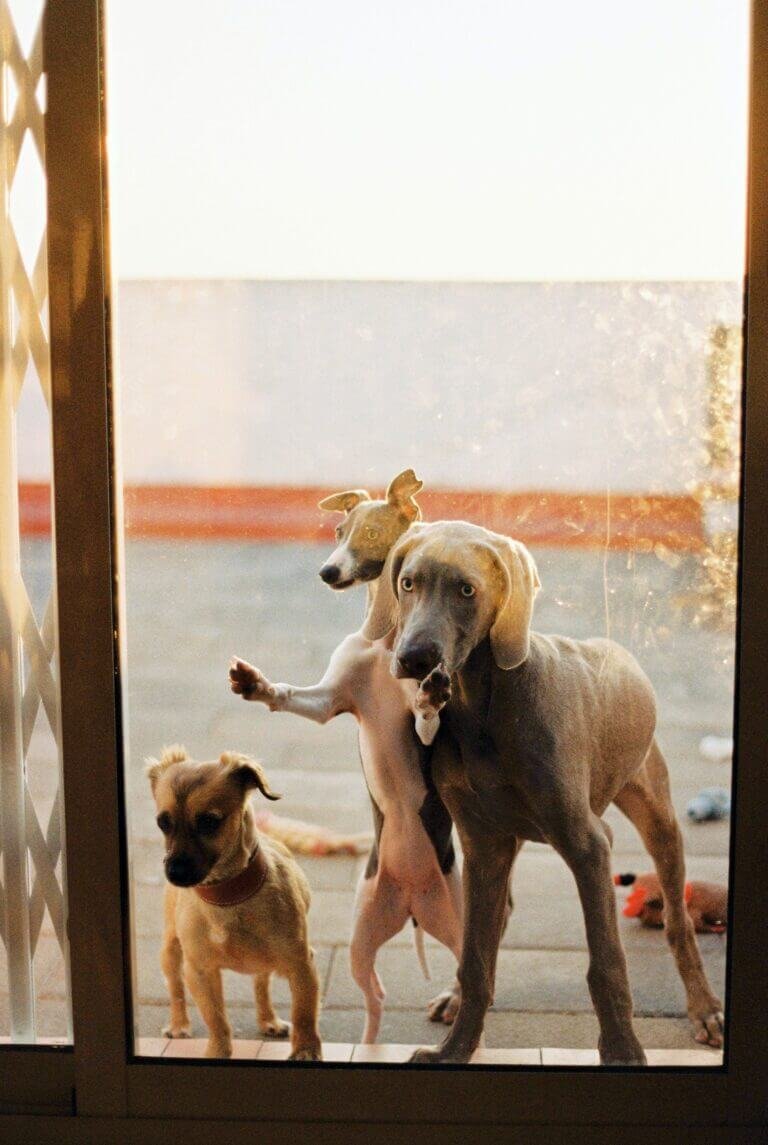Are you frustrated with your dog’s guarding behavior? Whether it’s growling, barking, or even aggressive displays, dealing with this issue can be challenging. In this article, we will explore effective training techniques to help you address and overcome your dog’s guarding instincts. By understanding the underlying reasons behind this behavior and implementing positive reinforcement, you can create a safe and peaceful environment for both you and your furry friend.

Understanding Guarding Behavior
Guarding behavior in dogs refers to the instinctive or learned behavior of protecting resources such as food, toys, or territory. It is essential to understand this behavior to effectively address and modify it. By understanding the causes and signs of guarding behavior, you can employ appropriate training techniques to help your furry companion overcome this behavior.
Ready for Cat Trivia?
Test your knowledge about cats!

What is Guarding Behavior?
Guarding behavior, also known as resource guarding, is a natural behavior seen in many dog breeds. It stems from their instinct to protect their resources from potential threats or competition. Dogs may guard items such as food, toys, bones, sleeping areas, or even their owners. This behavior can range from mild to severe, and it is important to address it early on to prevent any escalation.
Causes of Guarding Behavior
Guarding behavior can arise due to various reasons. One of the primary causes is genetics. Certain dog breeds are more predisposed to guarding behaviors because of their heritage as protectors or working dogs. Environmental factors, such as a lack of socialization or negative past experiences, can also contribute to the development of guarding behavior. It is important to note that guarding behavior can occur in both puppies and adult dogs.
Common Signs of Guarding Behavior
Recognizing the signs of guarding behavior is crucial in addressing and modifying it. Some common signs include growling, snarling, snapping, or biting when someone approaches the guarded resource. Dogs may also display body language cues such as stiffening their body, raising their hackles, or showing a tense expression. Learning to recognize these signs early on can help you intervene and prevent any potential escalation.
Training Techniques for Guarding Behavior
Positive training techniques can be highly effective in managing and modifying guarding behavior in dogs. By using methods that focus on rewarding desired behavior and building trust, you can help your dog overcome their guarding tendencies and develop a more relaxed and confident demeanor.
Positive Reinforcement
Positive reinforcement involves rewarding your dog for displaying desired behavior. When it comes to guarding behavior, this can be done by teaching your dog an alternative behavior such as “drop it” or “leave it.” By rewarding your dog with treats or praise when they willingly give up a resource, they will start associating positive outcomes with relinquishing control. This technique encourages your dog to choose cooperation over guarding.
Desensitization and Counterconditioning
Desensitization and counterconditioning are techniques used to change a dog’s emotional response to a triggering stimulus. In the case of guarding behavior, this involves gradually exposing your dog to situations where they may typically guard their resources, but in a controlled and non-threatening manner. By pairing the presence of the stimulus with positive experiences, such as treats or play, your dog will learn to associate the stimulus with positive outcomes.
Reward-Based Training
Reward-based training focuses on reinforcing desired behavior with rewards such as treats, praise, or playtime. By consistently rewarding your dog for displaying non-guarding behaviors and ignoring or redirecting them when they exhibit guarding behaviors, you can shape their behavior in a positive direction. This approach helps build a strong bond of trust between you and your dog, making it easier to address and modify their guarding tendencies.
Establishing Leadership and Trust
Building a strong bond with your dog and establishing yourself as a trusted leader is crucial in addressing guarding behavior. Dogs look up to their owners for guidance and seek reassurance. By creating a structured and consistent environment, you can help your dog feel secure and reduce their need to guard resources.
Building a Strong Bond
Building a strong bond starts with spending quality time with your dog. Engage in activities such as daily walks, interactive play, and training sessions. These activities not only provide physical exercise but also strengthen the emotional connection between you and your dog. Regular positive interactions and consistency in your actions will help establish a foundation of trust.
Establishing Rules and Boundaries
Dogs thrive in environments where they understand the rules and boundaries. Clearly define what is acceptable and unacceptable behavior, and consistently enforce these rules. Reward your dog for following the rules and redirect them when they exhibit guarding behavior. By setting clear expectations, your dog will have a better understanding of how they should behave and will be less likely to exhibit guarding tendencies.
Socializing Your Dog
Socialization is a critical aspect of a dog’s development and can play a significant role in minimizing guarding behavior. By exposing your dog to various environments, people, and animals in a positive and controlled manner, you can help them become more comfortable and confident in different situations.
Introducing Your Dog to New Environments
Gradually introduce your dog to new environments, starting with low-stress settings and gradually progressing to more challenging ones. This exposure helps your dog become accustomed to different sights, sounds, and smells, reducing their anxiety and fear responses. Ensure that each new experience is associated with positive rewards, such as treats or playtime, to help create positive associations.
Exposing Your Dog to Different People and Animals
Exposing your dog to different people and animals plays a vital role in preventing guarding behavior. Arrange controlled interactions with unfamiliar individuals and other dogs, setting the stage for positive experiences. Start with calm and friendly individuals or well-behaved dogs and gradually expose your dog to more challenging scenarios. Always monitor the interactions closely and intervene if any signs of guarding or aggression arise.

Teaching the ‘Leave It’ Command
The “leave it” command is a valuable tool in managing and modifying guarding behavior. By teaching your dog to disengage from a resource on command, you can prevent potential guarding episodes and redirect their attention to more appropriate activities.
Importance of the ‘Leave It’ Command
The “leave it” command teaches your dog to let go or move away from a desired resource, whether it is a toy, food, or any object they may guard. This command empowers you to control your dog’s behavior and redirect their focus. By utilizing the “leave it” command, you can keep your dog safe, prevent resource guarding, and promote positive interactions with others.
Step-by-Step Training Method
To teach the “leave it” command, start by offering a low-value object in one hand and a high-value treat in the other. Place the low-value item within reach and, as your dog shows interest, say “leave it” firmly. When they respond by looking away or ignoring the item, reward them with the high-value treat and praise. Gradually increase the difficulty by using more tempting items, adding movement, and practicing in different environments.
Reinforcing the Command
Consistency is key when reinforcing the “leave it” command. Practice the command regularly in various situations, gradually increasing distractions. Reward your dog with praise, treats, or play when they successfully respond to the command. With repetition and positive reinforcement, your dog will learn to disengage from resources on command, reducing the likelihood of guarding behavior.
Handling Resource Guarding
Resource guarding can pose challenges and requires careful management to avoid potential conflicts or injuries. Understanding how to identify resource guarding behavior, prevention strategies, and available treatment options can help address this behavior effectively.
Identifying Resource Guarding Behavior
Resource guarding behavior can manifest in several ways. Dogs may growl, show aggression, or exhibit body language indicating discomfort or fear when someone approaches their guarded resources. Some common signs include stiffening their body, baring teeth, lunging, or snapping. It is crucial to recognize these signs early to prevent any potential escalation.
Preventing Resource Guarding
Prevention is essential when it comes to resource guarding. Start by providing your dog with a positive association when someone approaches their resources. Approach them calmly and offer high-value treats or rewards. Gradually work on exchanging objects with your dog, rewarding them for willingly letting go of the item. This process helps your dog understand that giving up resources leads to positive outcomes.
Treatment Options for Resource Guarding
If resource guarding behavior persists or escalates, seeking guidance from a professional trainer or behaviorist is highly recommended. They can assess the situation, provide personalized training plans, and offer guidance on safely managing and modifying the behavior. Treatment options may involve desensitization and counterconditioning techniques or implementing behavior modification programs tailored to your dog’s specific needs.

Addressing Aggressive Guarding Behavior
Aggressive guarding behavior can pose a significant risk to both humans and other animals. This behavior requires immediate attention and should be approached with caution. Seeking professional help is crucial to ensure the safety of all involved parties and to obtain expert guidance on managing and modifying aggressive guarding behavior.
Understanding Aggressive Guarding
Aggressive guarding behavior involves intense aggression displayed when a dog attempts to protect their resources. This behavior can result in serious injuries or legal complications. Aggressive guarding may manifest as growling, snarling, lunging, or biting, and it is essential to address it promptly through professional guidance.
Seeking Professional Help
When dealing with aggressive guarding behavior, it is crucial to consult a professional trainer or behaviorist. Their expertise and experience can help assess the severity of the behavior and develop a tailored behavior modification program. They may also provide guidance on safety measures to prevent any potential incidents and help ensure the well-being of all parties involved.
Managing and Modifying Aggressive Behavior
Managing and modifying aggressive guarding behavior requires a comprehensive approach. A behavior modification plan may include techniques such as counterconditioning, desensitization, and positive reinforcement training. Providing a safe and structured environment, setting clear boundaries, and utilizing reward-based training methods are essential components in overcoming aggressive guarding behaviors.
Tips for Successful Training
Successful training requires consistency, patience, and a positive approach. By following these tips, you can create a harmonious and well-behaved canine companion.
Consistency and Patience
Consistency is key in training your dog. Establish consistent rules, routines, and boundaries, and ensure that all family members are on the same page. Patience is equally essential, as training takes time and repetition. Stay calm, avoid frustration, and focus on building a positive and trusting relationship with your dog throughout the training process.
Using Appropriate Rewards
Using appropriate rewards, such as treats, praise, or play, reinforces positive behavior and helps motivate your dog. Identify what motivates your dog the most and use it as a reward during training sessions. Ensure that the rewards are timely, meaningful, and consistent. By choosing the right rewards, you can significantly enhance training outcomes.
Avoid Punishment
Punishment-based training techniques are not recommended as they can create fear, anxiety, and aggression in dogs. Instead, focus on positive reinforcement and redirecting unwanted behaviors. Reward your dog for displaying appropriate behavior, and direct their attention to more desired activities. By using positive methods, you will create a positive and trusting training environment.

Preventing Guarding Behavior in Puppies
Prevention is always better than correction, especially when it comes to guarding behavior in puppies. By incorporating early socialization and teaching valuable skills, you can help prevent the development of guarding behavior in your puppy.
Early Socialization
Early socialization plays a vital role in shaping your puppy’s behavior. Expose them to various environments, people, and other animals from a young age. Gradually introduce them to new experiences, ensuring each one is positive and rewarding. This exposure helps your puppy develop confidence and adaptability, minimizing the likelihood of developing guarding behavior.
Handling and Exchanging Objects
Teach your puppy to be comfortable with having their possessions handled and exchanged. Offer treats or rewards when you take away their toys, food bowl, or other objects. This process helps them associate handling and exchanges with positive outcomes. By establishing a positive association early on, your puppy will be less likely to develop guarding tendencies.
Seeking Professional Help
In some cases, professional assistance may be necessary to address and modify guarding behavior. Recognizing when to consult a professional trainer or canine behaviorist is crucial in ensuring your dog receives the necessary guidance and support.
When to Consult a Professional Trainer
If your efforts to modify guarding behavior are not yielding the desired results, or if the behavior is severe or potentially dangerous, it is important to consult a professional trainer. They have the expertise and knowledge to assess the situation, develop a personalized training plan, and guide you through the behavior modification process. A professional trainer can provide insight and assistance tailored to your dog’s specific needs.
Working with a Canine Behaviorist
In more complex cases, working with a certified canine behaviorist may be beneficial. Canine behaviorists specialize in understanding and modifying complex behavioral issues. They have a deep understanding of canine psychology and can provide advanced behavior modification techniques. Working with a behaviorist ensures that your dog receives expert guidance and allows for a more comprehensive approach to addressing and modifying guarding behavior.
In conclusion, understanding and addressing guarding behavior in dogs is crucial for their overall well-being and the safety of those around them. By employing positive reinforcement training techniques, establishing trust and leadership, socializing your dog, and seeking professional help when needed, you can effectively manage and modify guarding behavior. Remember, consistency, patience, and a friendly approach are keys to successful training and fostering a happy and well-adjusted canine companion.



